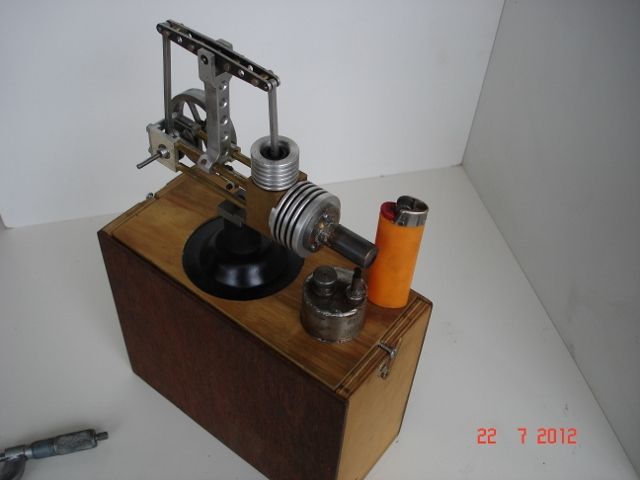Posted by ROBERT BLACKSHAW on 24/10/2016 18:18:43:
I have 99% ethanol on order,but while I wait for this I have tried it out several times with butane propane mix, again this will leave a residue. I noticed that a yellow flame is visible and will leave a black carbon mark on a clean piece of material.
This is a sign of incomplete combustion. It's due to either a shortage of oxygen, excessive fuel in the mix, inadequate fuel-air mixing, or perhaps insufficient time for combustion to complete before the valves open.
I've not tried a flame breather yet, so take this with a pinch of salt! Liquid fuel possibilities would seem to include:
- Methanol. Pro: low carbon, available pure, few purchase restrictions. Con: fuel to air proportions relatively critical, lowish heat.
- Ethanol. Pro: low carbon. relatively wide range of satisfactory fuel/air mix. Con. Pure Ethanol is a controlled substance that's difficult to buy. Methylated Spirit, Bio-Alcohol etc. are all adulterated to discourage substance abuse and conversion to drinking alcohol. Adulterated ethanol will not be as easy to use as pure alcohol in this application.
- Acetone. Pro. Moderate carbon. Relatively wide range of satisfactory fuel/air mix similar to ethanol. Available pure. Con. Solvent that may attack plastic & rubber. Care in handling needed.
- Propanol: Pro. Moderate Carbon. Available pure. Con. fuel to air proportions relatively critical.
The relative proportion of fuel to air in this type of engine is important. Almost any mix of Hydrogen and Oxygen will burn but most other fuels are very fussy. Negative effects are failure to run at all, or production of residues.
Late thought: if you attempt to buy chemicals from your local Pharmacy they know all about medical restrictions and expect to sell small quantities only. For example in the UK, Propanol (Rubbing Alcohol) is a Prescription item. Better to buy it as a solvent, then you don't need a prescription and will be able to buy in quantity.
Dave
Edited By SillyOldDuffer on 25/10/2016 10:39:10
Journeyman.





